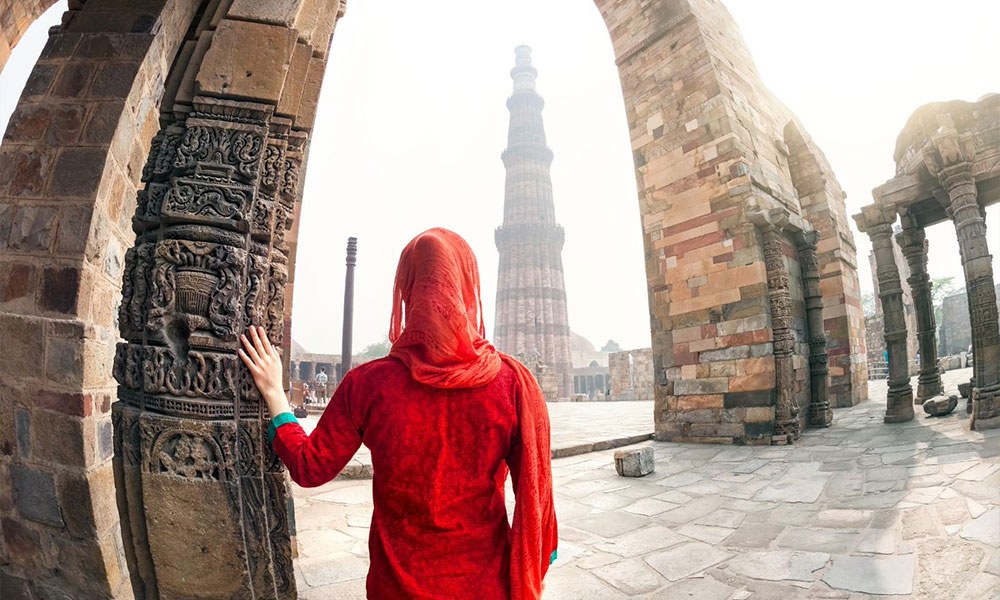Traveling to India can be an exciting and enriching experience, but it's essential to be well-prepared to make the most of your trip.
Passports & Visas
You require a valid passport from your country and a visa from an Indian mission abroad to enter India. The exceptions are:
• Citizens of Bhutan and Nepal do not require visas
• Nationals of Maldives do not require a visa for visits of up to 90 days
• Persons of Indian Origin and Non-Resident Indians who possess either an OCI or a PIO card, which are the equivalent of a long India visa
Type of Visas - for more information kindly visit the above link.
• Tourist Visa: Up to 6 months. Apply with: documents supporting your financial standing
• Tourist Visa on Arrival: The Indian Government has announced a tourist visa on arrival for citizens of five countries, Finland, Japan, New Zealand, Luxembourg, and Singapore, in an effort to promote tourism w.e.f. January 01, 2010 for a year. With a maximum validity of 30 days with single entry facility, the visa on arrival shall be granted by the Immigration Officers at Delhi, Mumbai, Chennai and Kolkata airports. A fee of US $60 or an equivalent amount in Indian rupees per passenger, including children, will be charged from each foreigner for the grant of tourist visa on arrival.
• Business Visa: One or more years. Apply with a letter from the sponsoring organization.
• Student Visa: For the duration of the academic course of study or for a period of five years whichever is less. Apply with: proof of admission to recognized Universities / Institutions in India.
• Transit Visa: Maximum period of 15 Days. Apply with: Evidence of onward travel to a destination outside India.
• Conference Visa: For the duration of the conference or seminar. Apply with: letter of invitation from the organizer of the conference.
List of important documents when you apply for a visa
Your passport valid for at least 6 months
Visa fee in cash or by postal order (cheques are normally not accepted)
Two passport-size photographs
Supporting documents, where necessary
Duly completed the application form
Some parts of India are "restricted areas" and require special permits
Note: Allow one month's processing time for postal applications.
Airport and Customs
International airports operate the conventional green and red channels, with officials liable to carry out sudden spot checks on passengers passing through the green channel. If carrying items of high value such as cameras, laptops and the like for your personal use during your trip, you may be asked to fill in a Tourist Baggage Re-export Form (TBRE) when you enter the country, which allows you to bring items into India free of duty, provided you take them back with you when you are leaving.
Baggage Allowance
The normal free allowance while flying he government-owned Indian Airlines is 30 kg in Economy and 40 kg in First Class. For the private airline operators, it is 20 kg in Economy and 30 kg in First Class, where available. You can carry only a single piece of hand baggage (within certain size specifications) on domestic flights.
Airport Departure Tax
Airport departure tax is usually included in your international tickets and does not have to be paid at the airport.
Health
Yellow Fever - Vaccination Certificate is required if arriving from an infected area.
Cholera/Typhoid - Innoculation recommended.
Malaria - No certificate required, but advisable to have a course of pills.
Eating and Drinking
Tap water is not purified for drinking. Unless you have access to a water filter or are sure water has been boiled, it is safer to stick to bottled water. Avoid ice in your drinks outside your hotel. Avoid ice cream or food sold by roadside vendors, uncooked or undercooked foods, fruit or vegetables that cannot be peeled.
Climate
Due to the sheer size of the subcontinent, it is quite difficult to confine the different seasons to particular periods of the year. One can say, India has three major seasons: winter, summer, and the monsoons.
The winter months (Nov-March) are pleasant throughout India with bright sunny days. In the Northern Plains, the minimum temperature at times drops steeply, and there is snowfall in the hills. The rest of the country is pleasantly cool, never really cold. The summer months (April-June) are hot in most parts of India with the mercury touching 45 Degrees centigrade. It is the ideal time to explore the sub-Himalayan region. The Monsoons tend to be depressing in some regions, and yet seem to uplift the spirit in some other parts of India.
Electricity
The majority of India works on 220 volts AC 50 Hz. However, it is possible that certain areas have DC supplies and it may be a good idea to check before using electrical appliances. Socket sizes vary, so it is well to take along a set of plug adaptors. Note: You will probably need to get an adapter for your devices. It's pretty easy to get "all-in-one" adapters that you can use to plug your device's power chord into before plugging into the power supply.
Shopping
India is a "shopper's paradise". Due to the patronage received over the past centuries, different types of arts developed in different areas. Silk, brocades, carpets, rugs, brass-ware, textile, miniatures, wooden carvings, furniture, and jewelry are great bargains. Returning or exchanging of goods once bought is not entertained. If you desire, the shops will export your purchase to your address. Most shops that sell to tourists welcome the major credit cards, some even accept personal cheques.
Tipping
Hotels, restaurants, taxis, etc., in this part of the world, do not include a tip in their bills. It is not obligatory to tip, but expectations are there.
